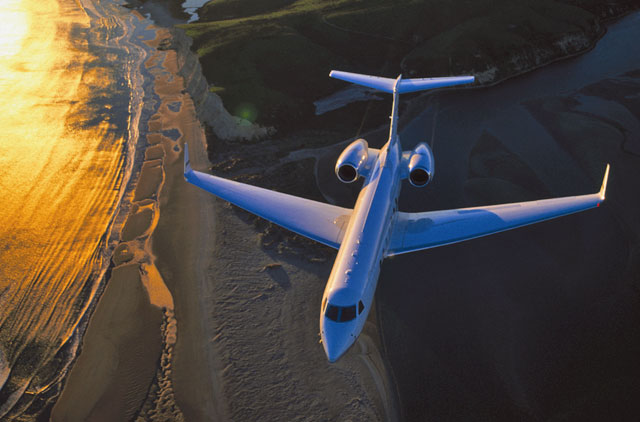Business jets are set to outperform all other certificated general aviation types in the USA over the next 20 years, according to a new forecast published by the Federal Aviation Administration.
It predicts that although the average annual growth rate for the whole general aviation sector – which includes traditional business jets, turboprops, fixed-wing piston aircraft and helicopters – will remain flat in the period to 2038, the business jet fleet will grow at an average rate of 2.2%. It expects the overall fleet and business jet totals to reach 214,100 and 22,200, respectively.
Turbine aircraft as a whole will also perform better than piston-powered types, the report says, with the US inventory expected to climb from 23,600 units in 2018 to more than 35,000 in 20 years – an average annual increase of 2%.

Gulfstream
Turboprops will grow by a more modest 1.7% per year, with the fleet forecast to total 12,600 in 2038, the report says.
The FAA's upbeat prediction is based on anticipated growth in the US economy, and expanding corporate profits – key ingredients for a thriving business aircraft market.
By contrast, the country's fleet of fixed-wing, certificated piston-singles is expected to shrink over the forecast period by 23,750 aircraft – an average annual decline of 0.9% – with the FAA predicting an inventory of around 119,650 in 2038. The agency attributes this gloomy outlook to “pilot demographics, overall increasing cost of aircraft ownership, coupled with new aircraft deliveries not keeping pace with retirements of the ageing fleet”.
The outlook for flying hours across the sectors is expected to stay in step with the change in fleet size, according to the report. Hours flown by turbine business aircraft are expected to rise from 7.2 million in 2018 to 11.6 million in 2038 – an average annual increase of 2.4% – thanks largely to the higher business jet utilisation, says the FAA.
Hours flown on traditional fixed-wing piston aircraft are predicted to slide by 2.4 million hours over the forecast period, declining to 11 million hours at an average rate of 1% per year, the FAA says.
Source: Flight International



















